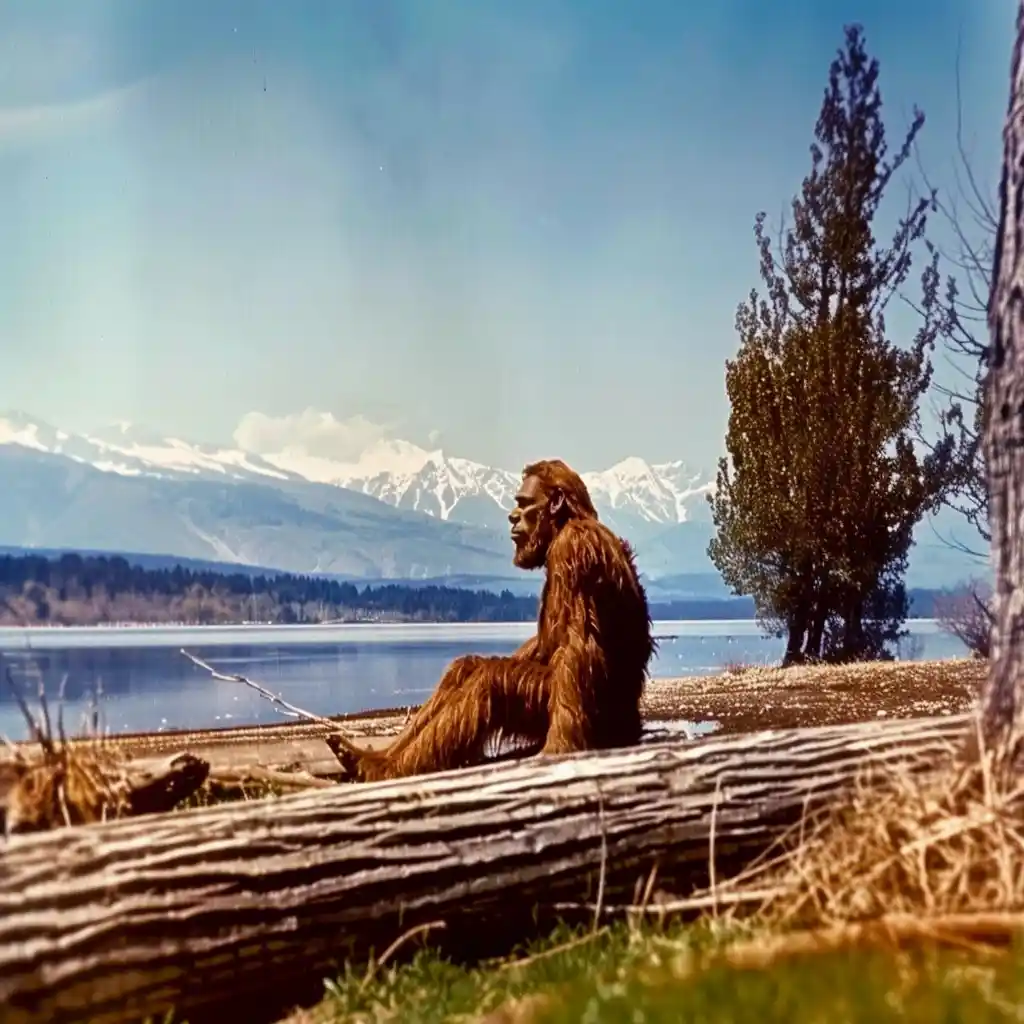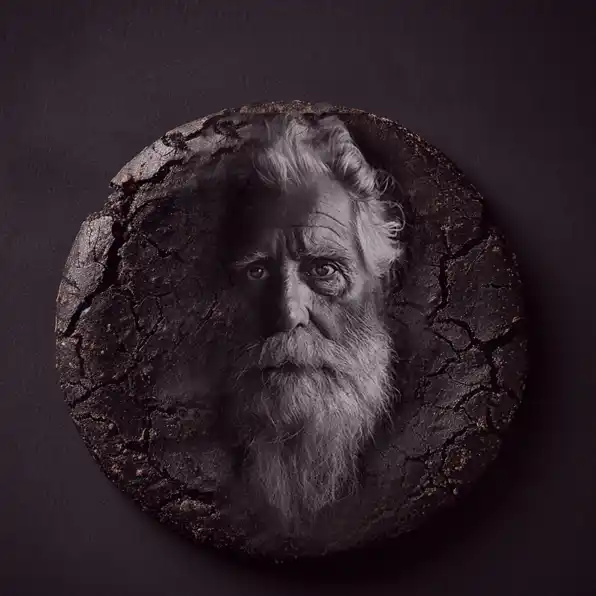
The Bigfoot
Der KI-Bigfoot-Film von 21 Million Lights hat sich in Nordamerika viral verbreitet und wird noch immer täglich hunderte Male angesehen. Vielleicht liegt das daran, dass eine gewisse Form von Hingabe in diesen Film geflossen ist – eine Art von Hingabe, die an Bigfoot oder den Yeti glauben möchte. Andererseits ist es dabei gar nicht so wichtig, ob es ihn wirklich gibt oder nicht; es zählt die Fantasie, also die Vorstellung, dass etwas real ist, wenn man es sich nur gut genug vorstellen kann.
Vielleicht funktioniert jeder Schöpfungsprozess auf diese Weise: Man muss es sich vorstellen können, und man muss daran glauben, dass es eines Tages existieren wird. Eine These dazu: Wenn ein paar tausend Menschen, oder in diesem Fall wahrscheinlich ein paar Millionen, an Bigfoot glauben, dann wird seine Existenz immer wahrscheinlicher. In Anlehnung an die Quantenphysik könnte man sagen, dass der Akt des Glaubens eine Art kollektiver Beobachtung darstellt, die in einer metaphysischen Sphäre die Möglichkeit von Existenz erzeugt. So wird das, was geglaubt wird, durch die bewusste Vorstellung realer, auch wenn es sich nicht in der physischen Welt manifestiert. Der Glaube selbst ist damit ein Teil des Prozesses, durch den Realität geformt wird.
Genug philosophiert, kommen wir zu den Fakten: Bigfoots, auch bekannt als Sasquatch, sind mysteriöse, affenähnliche Kreaturen, von denen gesagt wird, dass sie in den Wäldern Nordamerikas leben. Sie sind groß, behaart und schwer fassbar. Berichte stammen aus abgelegenen Gebieten, aber es gibt keinen wissenschaftlichen Beweis. Bigfoots sind ein bedeutender Teil der Folklore und erscheinen häufig in Geschichten und Medien. Trotz fehlender Beweise bleibt die Faszination für diese Kreaturen bestehen.
Aussehen: Große, behaarte, affenähnliche Wesen.
Lebensraum: Abgelegene, schwer zugängliche Wälder in Nordamerika.
Verhalten: Sehr schwer fassbar, bevorzugt nachtaktiv.
Beweise: Kein wissenschaftlicher Nachweis ihrer Existenz.
Kulturelle Bedeutung: Teil der Folklore, oft in Geschichten und Medien.
/// /// /// ///
Bigfoot
The AI Bigfoot film by 21 Million Lights has gone viral in North America and continues to be viewed hundreds of times daily. Perhaps this is because a certain kind of dedication went into this film—a kind of dedication that wants to believe in Bigfoot or the Yeti. On the other hand, it might not be so important whether or not it actually exists; what matters is the imagination, the idea that something is real if you can imagine it well enough.
And perhaps every creative process works like this: You have to be able to imagine it, and you have to believe that one day it will exist. Here’s a thesis: If a few thousand people, or in this case, probably a few million, believe in Bigfoot, then its existence becomes increasingly likely. Drawing from quantum physics, one could argue that the act of belief functions as a kind of collective observation that, in a metaphysical realm, generates the possibility of existence. Thus, what is believed becomes more real through conscious imagination, even if it does not manifest in the physical world. Belief itself is part of the process by which reality is shaped.
Enough philosophy; let’s get to the facts: Bigfoots, also known as Sasquatch, are mysterious, ape-like creatures said to inhabit the forests of North America. They are large, hairy, and elusive. Reports come from remote areas, but there’s no scientific proof. Bigfoots are a significant part of folklore and frequently appear in stories and media. Despite the lack of evidence, fascination with these creatures persists.
Appearance: Large, hairy, ape-like beings.
Habitat: Remote, hard-to-reach forests in North America.
Behavior: Very elusive, prefer nocturnal activities.
Evidence: No scientific proof of their existence.
Cultural Significance: Part of folklore, often in stories and media.
Related Posts
Who are you
Semper viverra nam libero justo laoreet sit amet. Pulvinar etiam non q
War and Kisses
Semper viverra nam libero justo laoreet sit amet. Pulvinar etiam non q
Angel Grace
Semper viverra nam libero justo laoreet sit amet. Pulvinar etiam non q
Glückskeks
Semper viverra nam libero justo laoreet sit amet. Pulvinar etiam non q
Royal Dogs
Semper viverra nam libero justo laoreet sit amet. Pulvinar etiam non q
Die Musiker
Semper viverra nam libero justo laoreet sit amet. Pulvinar etiam non q






